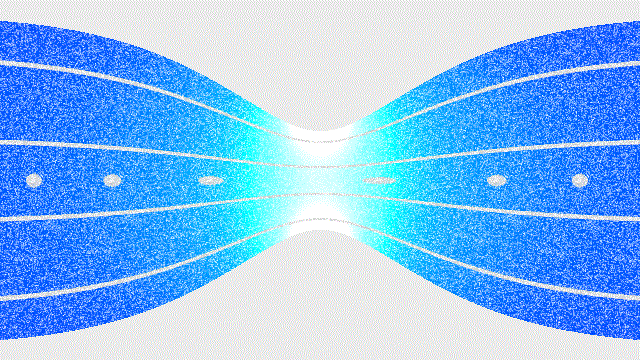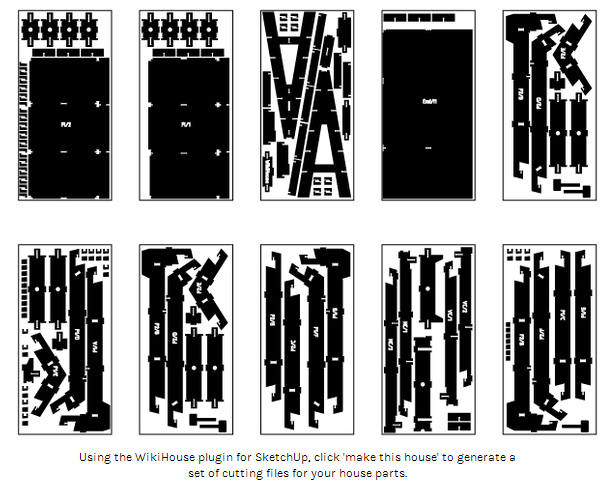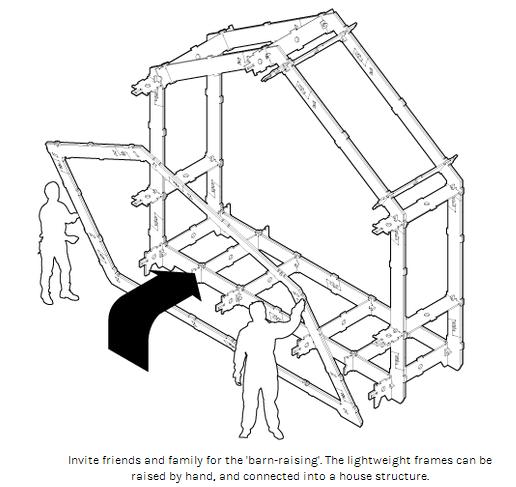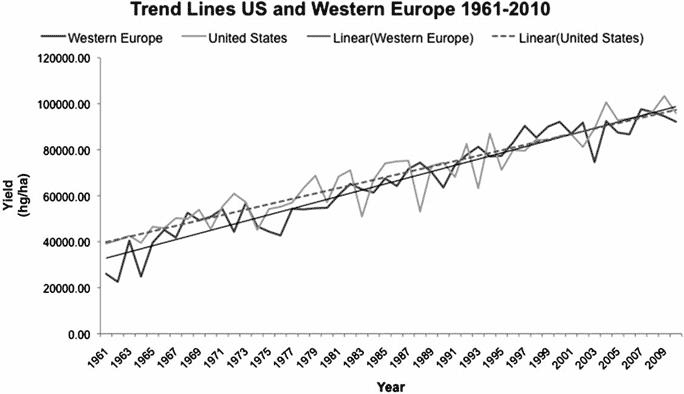A new study shows that the US Midwest staple crop system - predominantly genetically modified (GM) - is falling behind other economically and technologically equivalent regions. Western Europe, matched for latitude, season and crop type as well as economic and technological development, outperforms the US (and Canada) with regards to yields, pesticide use, genetic diversity and crop resilience, as well as farm worker wellbeing.
The study, headed by Jack Heinemann at the University of Canterbury, New Zealand, is a damning indictment of the large-scale, monoculture model in the US, the world’s largest producer of maize since the records began in 1961, and is increasingly relied upon to provide more and more of the world’s calorie intake [1]. This serves as a warning to the UK environmental minister Owen Paterson, who proposes to introduce GM crops into the UK [2].
US Midwest and European yields compared
Maize, rapeseed, soybean and cotton yield data were obtained from the United Nations Food and Agriculture organisation (FAO) FAOSTAT database for the United States, Canada and the total group Western Europe (Austrian, Belgium-Luxembourg, France, Germany, Netherlands and Switzerland). Records from 1961 to 2010 were used, while 2011 and 2012 data were included through projections and additional statistics. They conducted statistical covariance (ANCOVA) analyses to test whether the yield differed significantly between locations, year, percentage of GM crops used and any other interactions.
First compared was rapeseed and maize, which have similar agroecosystems (latitude, growing seasons and equally developed agriculture systems across the two continents as well as access to biotechnological and intellectual property (IP) rights options, which are legal protection for so-calledcreations of the mind, allowing industry to own GM seeds through claiming them as novel inventions. The major difference between the continents is the near saturation of GM varieties in N. America compared to a virtual absence in W. Europe. Between 1961 and 1986, the US maize yield averaged
5 700 hectogram/hectare (hg/ha) more than W. Europe, totalling 54 379 hg/ha. (A hectogram = 100 g). However, after 1986, there was a significant change in yield between the compared regions. W. Europe averaged 82 899 hg/ha, slightly more than the 82 841 hg/ha in the US (see Table 1).This suggests that GM has offered no benefit whatsoever in the US – contrary to what has been claimed - while the overall increase in yields in both regions were due to improved management and conventional breeding (see Figure 1).
Table 1 Yield data of maize and rapeseed in the US (and Canada) versus Western Europe
| Agroecosystem | Crop | Average yield (hg/ha) |
United States 1961 – 1985
|
Maize
|
54,379
|
Western Europe 1961 – 1985
|
Maize
|
48,681
|
United States 1986 – 2010
|
Maize
|
82,841
|
Western Europe 1986 – 2010
|
Maize
|
82,899
|
Canada 1961 – 1985
|
Rapeseed
|
10,489
|
Western Europe 1961 – 1985
|
Rapeseed
|
21,481
|
Canada 1986 – 2010
|
Rapeseed
|
14,588
|
Western Europe 1986 – 2010
|
Rapeseed
|
31,885
|
Figure 1 Yield data for maize show more improvement and less variability in Europe compared to the US despite Europe’s lack of GM varieties
Further, the difference between the estimated yield potential and the actual yield, or the ‘yield-gap’ appears smaller in Europe. Over the entire period of 1961 to 2010 the US reached marginally significantly higher yield averages, but when taking into account the interaction between year and location, a steeper increase in European maize yield was found in recent years, as consistent with the actually higher yields in Europe than in the US, despite the latter’s use of GM. Yield data from 2011 and projected yields for 2012 reveal a downward trend in the US compared with Europe. Fluctuations in yield are more severe in the US, a sign of reduced resilience to environmental stressors, which can also spark dramatic price changes in agricultural markets.
Rapeseed (or canola) shows a similar pattern when comparing yields from Canada, the next earliest adopter of GM after the US, with W. Europe. The average yield has always been lower in Canada by an average of 11 000 hg/ha during 1961-1985, and an even larger average difference between 1986 and 2010 of 17 300 hg/ha, the period when Canada moved to GM and Europe did not. Wheat yields have consistently increased in both regions, but increasing at a steeper rate in Europe. Neither region grows GM wheat, again highlighting that gains in yields over recent years are not dependent on GM technologies and that the combination of biotechnologies used in Europe is demonstrating greater productivity than in the US.
Low genetic diversity of US crops
Despite its size, the US agro-ecosystem has had very low levels of on-farm genetic diversity, with 80-85 % of maize in the 1980s for example being based on a single innovation – the T cytoplasm. Across the world, the low genetic diversity is a concern, with varieties of many staple crops decreasing in recent years. As FAO pointed out, China went from having 10 000 varieties of wheat in 1949 to 1 000 in the 1970s, while the US has lost 95 % of the cabbage, 91 % of field maize, 94 % of the pea, and 81 % of their tomato varieties in the last century.
Powerful economic and legislative forces continue to drive uniformity. There are two major farming policies in the US that affect sustainability – innovation (through development of licensing and IP rights) and public subsidies. Subsidies increase with higher acreage, promoting monoculture farming. The larger and more uniform the crop, the bigger the cost reduction on pest control, harvesting mechanisation and planting, which has been a major driver of GM crop adoption. With the huge subsidies given to industrial farms, the US is able to sell its staple crops including maize, wheat, sugar and milk at 73, 67, 44 and 61 % of cost price to the world market, which likely undermines the emergence of more sustainable production systems. Historically, low on-farm diversity has led to food production and price uncertainty.
The huge scale of production of staple crops has led to a reduction in seed varieties available to small-scale farmers and poorer farmers, as well as organic farmers. While staple crops are being used on a large-scale for non-food industries, with maize being put into ‘household’ products such as cosmetics and medicines e.g. asparin and deodorant, antibiotics, tobacco, fuel, pastes and adhesives, textiles, building supplies and solvents among other things. The concentrated control of such products by large corporations and companies in these breadbasket regions of the world has far reaching consequences beyond national borders. The US has gone from a system based on public seed saving and exchanges between large and small farmers in the 19th century to one based on strict patents and patent-like protections of varieties, forcing seed saving to disappear. The advent of hybrid varieties in the 1970s which act as a ‘biological patent’, with the next generations seeds not transmitting the commercial traits uniformly, the power of seed control is left in the hands of the commercial breeders, along with the ‘legal patent’ system. This has driven the US industry away from mainly small-scale, specialist breeders to even larger and fewer specialist breeders. Patents on GM crops are only exaggerating this trend. Seed saving on crops such as soybean was still common until they became available as GM cultivars and came under the control of patents in the 1990s.
Breeder concentration may lead to a loss of agrobiodiversity. The corn leaf blight epidemic of 1970 is a clear example of how the lack of genetic diversity can create a huge risk to food security, revealing the dangers and unsustainability of monoculture practices and genetic uniformity.
What has happened to seed diversity as a result of American agricultural innovations? Using the seed catalogue provided by Monsanto to the US Department of Justice antitrust investigation of the seed industry, Heinemann’s team analysed the number of seed cultivars on offer. They found that the true genetic base of corn was much narrower than the numbers of names and numbers would suggest. One single variety of corn, “Reed Yellow Dent”, contributes to 47 % of the gene pool used for creating hybrid varieties. The germplasm is limited to around 7 founding inbred lines in the US Maize belt. Similar findings were made for soybean varieties, with a decrease in the number of cultivars by 13 % from the years 2005-2010. A reduction in diversity is consistent with a trend towards reduced yields over the last decade or so, with adverse high temperatures and droughts. Maize and soybean yield predictions for 2012 were the lowest since 2003.
With this worrying trend of reduced yields comes a global increasing dependence on cereal crops for our calorie intake. Though the world produces more calories for food than it did in 1970, the proportion of calories derived from maize grew from 4 % in 1970 to 5 % in 2007. This heavy reliance on a crop that shows the large variability in losses due to biotic and abiotic stresses as highlighted by the authors is a sign of instability and not sustainability. This is in clear contrast to the agro-ecological advances made based on increased on-farm diversity that has seen significant increases in rice yields, reduced pesticide use as well as higher farmer incomes. Intercropping of maize with tobacco, maize with sugarcane, maize with potatoes and wheat with broad beans have all been shown to increase yields of at least one of the crops, or even overall yields as well as reduced disease [3].
Pesticide use higher in US
Pesticide use has increased overall since the introduction of GM crops (see [4]
Study Confirms GM Crops Increase Pesticide Use,
SiS 56), largely a result of the most common GM trait providing tolerance to Monsanto’s herbicide Roundup. Insecticide use has officially gone down slightly, though dwarfed by the increases in herbicide use. This coincides with the introduction of Bt crops genetically engineered to produce an insecticide (which is not included in official ‘pesticides applied’ when insecticide use is analysed). However, Europe also showed a reduction in pesticide use during the same period. In the US in 2007, herbicide use was up by 108 % from 1995 levels, while insecticide use dropped to 85 % of 1995 levels. In Europe however, more impressive reductions were found, with France reducing herbicide use to 94% of 1995 levels and chemical insecticide levels to 24% of 1995 levels. By 2009, herbicide and pesticide use was down to 82 % and 12 % of 1995 levels respectively. Similar trends were seen in Switzerland and Germany.
Farm workers role sacrificed for monoculture farming
Another symptom of the American monoculture farming system is the sacrifice of farm workers. The number of farms has decreased since its peak in 1935, with the loss of 2 million farms by 2007 despite the acreage of the agroecosystem remaining the same to this day. For corn, 69 % is grown by Large or Very Large Farms as defined by the USDA, i.e., having sales in excess of $250 000 and $500 000 respectively. This comes with the inability of farmers to innovate and breed new varieties due to the monopolisation of the seed market and IP patent agreements which have all but abolished public breeding programmes. As the authors state [1]: “Loss of farmer experimentation will likely reduce resilience and adaptation to climate change, natural disasters or as an outcome of conflict.” The GM crop system, with its strict IP patent agreements and commercial development, contributes to the concentration of the seed market, as exemplified by the soybean varieties planted today: 0.5 % of soybean varieties were developed by the public sector in 2007, compared to 70 % in 1980. Seed prices have risen as a result, climbing by 140 % since 1994. With climate change affecting the global yields since the 1980s and 1990s for soybean, there is no evidence that strict IP instruments or biological patents have increased resilience so far.
A warning to the US and the rest of the world
The lessons of the 1972 epidemic of ‘corn leaf blight’ have still not been learnt. The Committee on Genetic Vulnerability of Major Crops at the US National Research Council at the time posed the question: “How uniform genetically are other crops upon which the nation depends, and how vulnerable, therefore, are they to epidemics? The answer is that most major crops are ‘impressively genetically uniform and thus vulnerable and results from government legislative and economic policy’.
The authors recommend important strategies that need to be employed to bring the US back to being one of the largest seed saving and exchange cultures, instead of the current undemocratic and unsustainable system they currently force on farmers in the US and the rest of the world.
Three main suggestions include collection of annual statistics on on-farm genetic diversity along with environmental stress events, to see get a picture of performance resilience. Second, on-farm diversity should be encouraged through policies such as subsidies. Lastly, instead of looking to peak yields of crops, the goal should be to select crops with long-term sustainable yields.
GM crop cultivation, which is an extreme version of industrial farming, is obstructing a shift to more sustainable methods of food production and in addition to reducing yields, is now associated with a plethora of negative human health and environmental impacts as documented in
Ban GMOs Now - Special ISIS Report [5]. To increase crop yields, protect the environment and protect the health of citizens across the world, GM crops need to be banned.
References
- Heinemann JA , Massaro M, Coray DS, Agapito-Tenfen SZ, Wen JD. Sustainability and innovation in staple crop production in the US Midwest.International Journal of Agricultural Sustainability 2013, http://dx.doi.org/10.1080/14735903.2013.806408
- “Owen Paterson: UK must become global leader on GM crops”, Guardian.com http://www.guardian.co.uk/environment/2013/jun/20/owen-paterson-uk-global-leaders-gm-crops 26th June 2013-06-26
- Lee EA & Tracy WF. Modern maize breeding. In: J. Bennetzen and S. Hake, eds. Handbook of maize: genetics and genomics. New York, NY: Springer, 141–160
- Sirinathsinghji E. Study Confirms GM crops lead to increased Pesticide Use.Science in Society 56, 8-10, 2012
- Ho MW & Sirinathsinghji E. Ban GMOs Now. Health and Environmental Hazards Especially in Light of the New Genetics. ISIS Special Report, 2013. http://www.i-sis.org.uk/Ban_GMOs_Now.php



























